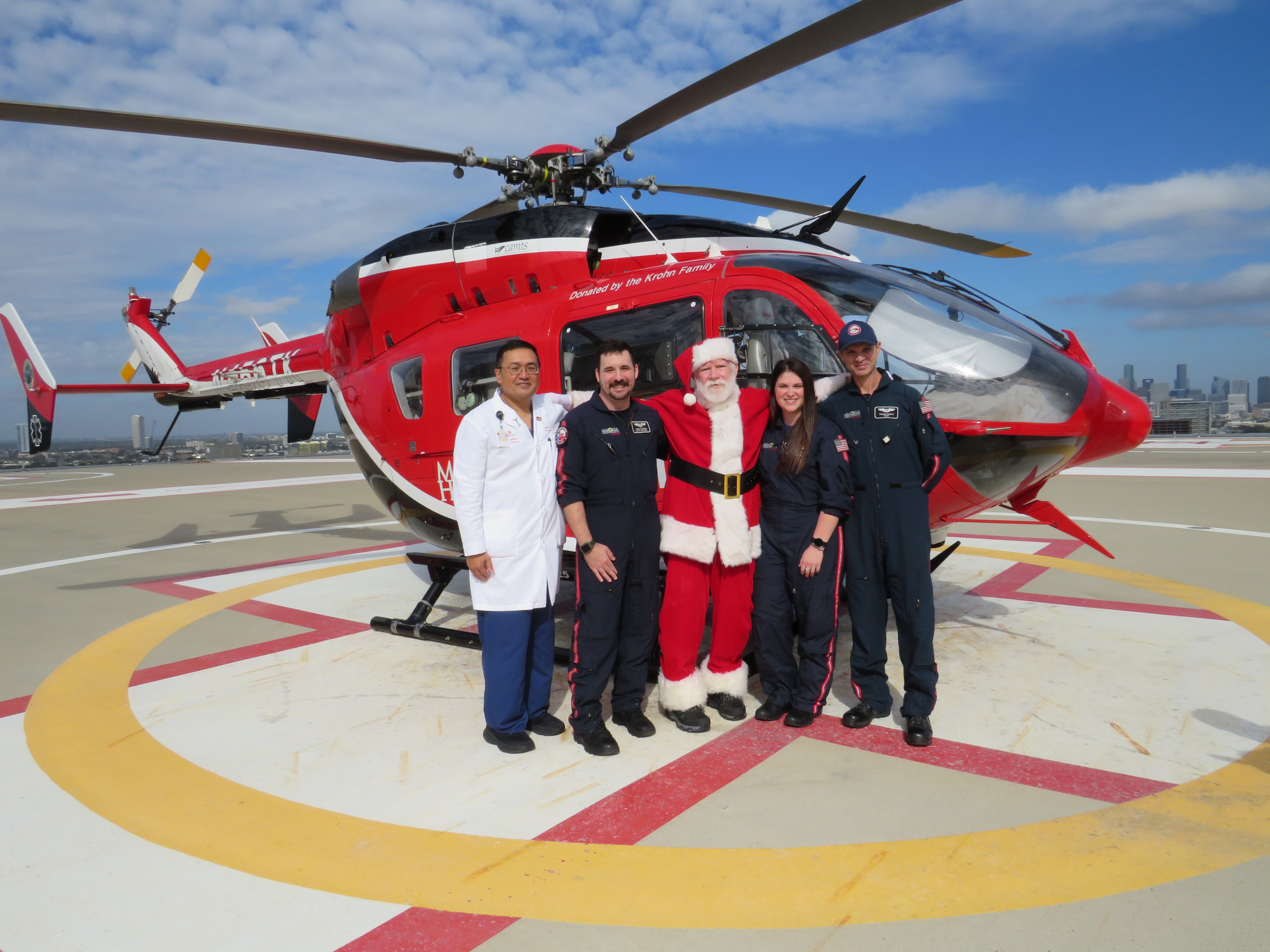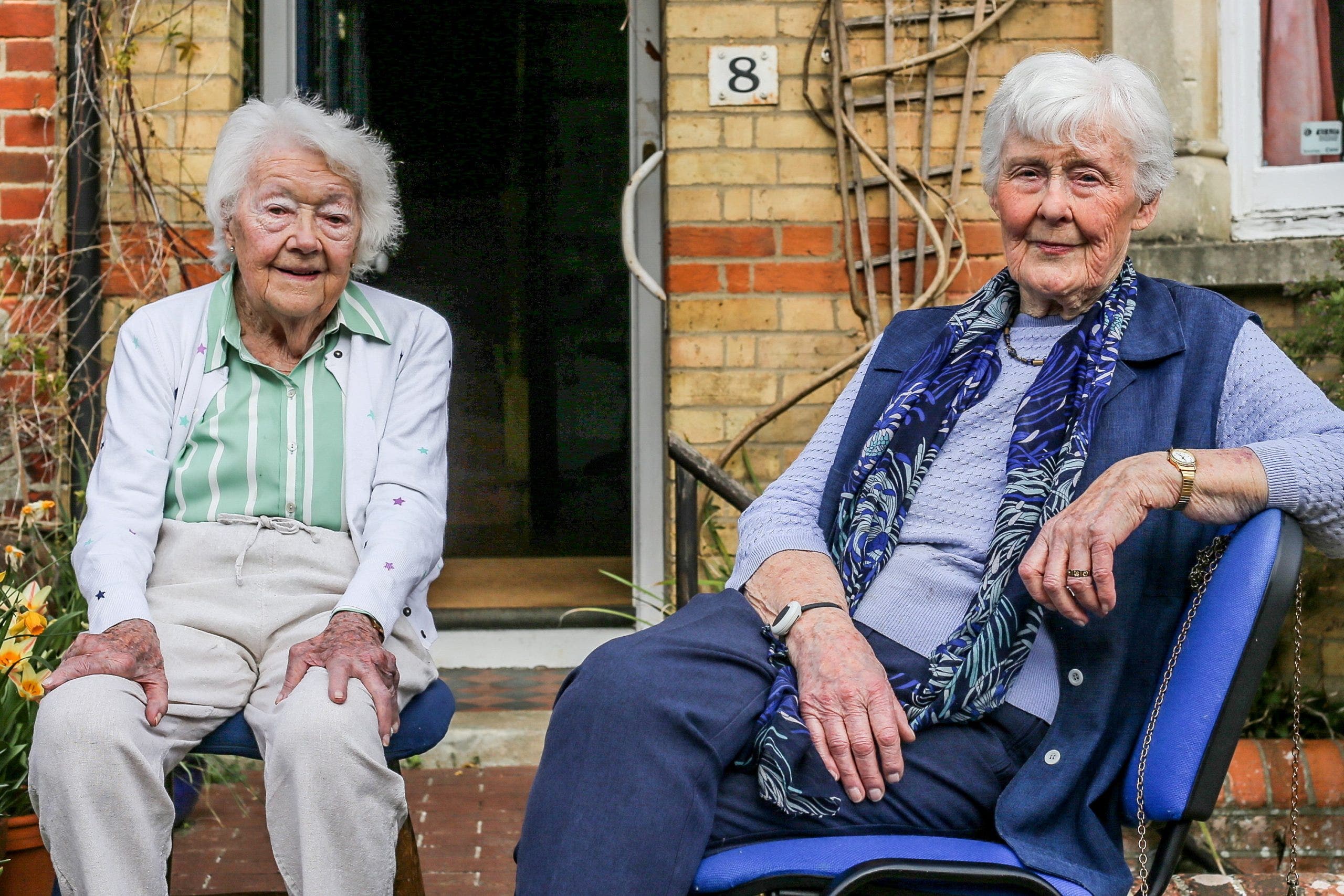For a Texas cardiologist who recently saved Santa Claus’ life, Christmas came early when Kris Kringle stopped by the hospital to express his gratitude.
Dennis Vaughan, 74 — along with his wife (“Mrs. Claus”) and their children and grandchildren — visited the helipad of Memorial Hermann-Texas Medical Center in Houston for a reunion with Dr. Anthony Estrera and the Life Flight crew who saved Vaughn’s life in September.
In keeping with the spirit of the season, Vaughan and his wife were all suited up for Christmas.
LITTLE GIRL IN MIAMI TELLS SANTA SHE DOESN’T WANT TO SIT ON HIS LAP AND HIS REACTION GOES VIRAL
Fox News Digital spoke with Vaughan, his wife and Dr. Estrera about the near-death experience, the life-saving measures taken by his care team — and the joyful reunion.
Vaughan, a retired welder, has been filling the role of Santa for the past several years.
For a Texas cardiologist who recently saved Santa Claus’ life, Christmas came early when Kris Kringle stopped by the hospital to express his gratitude. (Memorial Hermann Health System)
He and his wife make regular visits to Christmas parties, churches, day cares and schools during the holidays.
“It really brings joy to the kids — to see their faces light up when Santa walks in,” Vaughan told Fox News Digital. “It’s been really fun.”
TEXAS MAN REVEALS HOW HIS SANTA-FOR-HIRE BUSINESS HAS CHANGED OVER THE YEARS: ‘MORE PERSONALIZED’
Just before the start of the 2023 holiday season, Vaughan was about to head to a doctor’s appointment. But before they left the house, his wife found him seated with his head slumped over — he had passed out.

Dennis Vaughan and his wife have been dressing as Santa and Mrs. Claus for the past several years, stopping by churches, day cares and holiday parties. (Dennis Vaughan)
She called 911, and Vaughan was rushed to a local hospital, where it was determined that he’d had an aortic dissection, or a tear in the aorta, the largest artery in the body.
The tear caused internal bleeding around Vaughan’s heart, putting him at risk of death.
WHEN MEASURING HEART ATTACK RISK, ONE IMPORTANT RED FLAG IS OFTEN OVERLOOKED, DOCTORS SAY
“They thought he had died because he was so pale and he was losing blood,” Vaughan’s wife told Fox News Digital.
Doctors told her that Vaughan would have died within 30 minutes without immediate medical attention.
Recalling the incident through tears, Vaughan said, “If it had been my time to go, I had made my peace with God.”

Vaughan is shown arriving on the helipad to reunite with his doctor and LifeFlight team. (Memorial Hermann Health System)
After the diagnosis, Vaughan was transported to Memorial Hermann-Texas Medical Center by LifeFlight.
Estrera, professor and chair at UTHealth Houston and Memorial Hermann Heart & Vascular, performed emergency surgery and replaced the torn aorta with a graft — a procedure that he compared to a plumber replacing a broken section of pipe.
“It was an absolute team effort — everything had to work perfectly,” Estrera told Fox News Digital.
DEAF GIRL FINALLY TELLS SANTA WHAT SHE WANTS FOR CHRISTMAS AFTER ELF HELPS HER ‘SIGN’ HER WISH LIST
“He was hypertensive and in shock and every minute mattered,” the doctor said. “We went straight from the helicopter pad to the operating room.”
The dissection had caused bleeding into and around Vaughan’s heart, which is why he passed out.
“Mr. Vaughan had a lot of angels looking after him that day.”
“He had no blood flow going anywhere — so we had to operate as soon as possible to release the blood so that we could get some heart function back and then rebuild his aorta, which is the main pipe of the body.”
Estrera was able to rebuild the portion of the aorta that had been dissected.

Vaughan was emotional as he greeted Dr. Estrera and members of the LifeFlight team who saved his life. “It was important for me to give thanks to them,” he said. (Memorial Hermann Health System)
“If there had been even a moment’s delay, he wouldn’t be with us,” the doctor said. “Mr. Vaughan had a lot of angels looking after him that day.”
Gazing ahead, Vaughan will need to manage his blood pressure, Estrera noted, as high pressure can affect the stress forces on the aortic wall.
HOLIDAY PHOTO HUNT: HOW FAST CAN YOU FIND SANTA’S MISSING RED HAT?
Adhering to a healthy diet and avoiding smoking will also help prevent future heart events, the doctor said.
“He has no big restrictions — although he probably shouldn’t be lifting 100-pound bags or anything like that,” Estrera joked. “All in all, he can live a normal life.”
Two months after Vaughan’s near-death experience, he and his wife had an emotional reunion with the medical team at Memorial Hermann-Texas Medical Center in Houston on Wednesday.

Vaughan embraces members of his medical care team during the emotional reunion. ( Memorial Hermann Health System)
Dressed in his Santa uniform, Vaughan hugged Estrera and the LifeFlight crew as he broke into tears. Mrs. Claus handed out homemade Christmas cookies to everyone.
Vaughan told Fox News Digital that he felt compelled to share his gratitude with the people who saved him.
“It was important for me to give thanks to them,” he said.
CLICK HERE TO SIGN UP FOR OUR HEALTH NEWSLETTER
Vaughan and his wife are looking forward to a relaxing holiday with their two children and six grandchildren.
They plan to return to the Santa circuit next year, after he’s had some time to rest and recover.
What to know about aortic dissections
While aortic dissections are not as common as heart attacks, Estrera emphasized that they do happen.
Although Vaughan’s initial doctors identified the diagnosis when he was brought in, the condition is often overlooked.

Vaughan and his wife are pictured with their six grandchildren. (Dennis Vaughan)
“The problem is people don’t recognize it when folks are presenting with chest pain,” Estrera said.
“That’s why it’s so important to increase awareness of this situation. When someone’s having chest pain, it’s more often a heart attack, but you can’t forget about the other diagnoses because the treatments are completely different.”
CLICK HERE TO GET THE FOX NEWS APP
The main risk factors for aortic dissection are high blood pressure, smoking and family history.
“This runs in families 20% of the time,” said Estrera. “That’s why it’s important to be aware of folks who may have a family history or have had a sudden death.”
The doctor added, “If Mr. Vaughan [had] died and never gotten an autopsy, people would have just assumed it was a heart attack or stroke.”
For more Health articles, visit www.foxnews.com/health.





